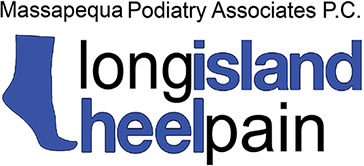Sports injuries – they can immediately sideline even the best players out there, bringing the fun of participation and the health benefits of exercise to a screeching halt. And when a sports injury keeps you out of the game long enough, your chances of gaining weight, becoming less fit in general, and possibly developing chronic foot conditions, like arthritis, can significantly increase.
In one of our recent blogs, we talked a bit about the kinds of injuries that are out there, what causes them, and how you can improve your odds of preventing them from happening at all.
But even if you take every reasonable precaution, there’s still a chance that you may get hurt. And if you do, you need to know the steps you need to take in order to treat your injury and recover from it quickly. That’s what we want to focus on today.
Table of Contents
What To Do After a Foot or Ankle Injury
 If you suspect you have suffered a foot or ankle injury, immediately stop what you are doing, remove your shoes, elevate your legs and apply ice to the injured area – never keep pushing through the pain. And, as soon as you able, contact our office to schedule an appointment so that we can determine and accurate diagnosis and provide appropriate treatment methods.
If you suspect you have suffered a foot or ankle injury, immediately stop what you are doing, remove your shoes, elevate your legs and apply ice to the injured area – never keep pushing through the pain. And, as soon as you able, contact our office to schedule an appointment so that we can determine and accurate diagnosis and provide appropriate treatment methods.
While you wait to come visit our office, avoid putting weight on your foot and ankle, as well as take the following steps:
- Rest your feet. The problem will not improve if you continue to strain the tissues in your feet.
- Ice the area. This will help reduce any potential swelling and relieve pain.
- Kick your feet up. Keep the injured foot raised above heart level as much as possible.
- Use a wrap or brace. This will help compress and stabilize the joint.
- Adjust your shoes. Choose footwear that will support your arches, protect your heels, and that leave plenty of room for your toes to wiggle freely.
- Avoid high-impact movements. Instead, opt for low-impact sports like swimming or biking.
- Take over-the-counter pain medication. Ibuprofen or acetaminophen should do the trick.
Smart precautions and at-home pain management strategies such as these not only help keep you as comfortable as possible in the period immediately following an injury, but reduce the risk that the condition will worsen before you can come see us.
And of course, it probably goes without saying, but if you are in severe pain or see a visible deformity (like a displaced broken bone), please call 911 and get the emergency care you need. We will be happy to follow up with you afterward.
Treatment Plan For Foot or Ankle Injuries
The next step is getting a full evaluation from a foot and ankle sports medicine specialist—like, say, Dr. Fox or Dr. LoBello. The methods used to address different injuries largely depend on the severity of pain and the extent of the damage associated with said injury.
When you come visit our office, we will be able to determine the best course of action.
Some injuries really may only require time to rest, alongside a modification in equipment or training routine to help prevent it from occurring again.
Others may benefit from a more advanced conservative option, such as custom orthotics or K-laser therapy. Laser therapy in particular is often a great choice for athletes looking to get back to their teams and seasons as quickly as possible, since it helps accelerate the body’s own natural healing processes in addition to relieving pain and inflammation.
More severe injuries may require immobilization, or even surgery. That’s never our first choice if we can avoid it, but sometimes it really is necessary.
Regardless of the route your treatment needs to take, however, you can trust that we are well-equipped to get you back on your feet.
How To Recover From a Sports Injury Fast and Safely
 For many athletes, the period between “treatment” and “back in game shape” is the hardest time of all. Depending on your circumstances, you may find recovery and rehabilitation boring, frustrating, or even depressing.
For many athletes, the period between “treatment” and “back in game shape” is the hardest time of all. Depending on your circumstances, you may find recovery and rehabilitation boring, frustrating, or even depressing.
On the other hand, after making a little bit of progress, you may be tempted to return to sports too soon, which can trigger a significant setback.
We know that recovery isn’t always fun, but it’s important to do it correctly. If you don’t take the necessary time and follow the necessary steps, you may not fully heal. Which means a greater risk of re-injury, or even development of chronic pain or post-traumatic arthritis.
Here are a few quick tips that may help you through your recovery.
- Always follow your doctor’s advice to the letter. We have been through this hundreds if not thousands of times with patients just like you. We really do have your best interests at heart. So please, stick with the program. Skipping out on your rehab exercises, or advancing to the next stage before you’re ready, will only worsen your outcome.
- Keep a positive mental attitude. We know—easier said than done, especially if you’re missing games. But a positive attitude not only keeps you focused, but it also helps you heal faster. Have faith in the process, and make a conscious effort to shift your mindset (or concentrate on something else) if you notice yourself feeling down or saying negative things.
- Keep your brain occupied. Find ways to refocus that determination and competitive drive into something less physical while your body heals. It could be reading, catching up on movies and TV, solving puzzles, playing video games, keeping a journal—whatever keeps you happy and engaged. For an athlete, just sitting around doing nothing is the absolute worst.
- Keep your body occupied (as you are able). Obviously, the amount of physical exercise you’ll be able to get during your recovery varies a lot depending on how severe your initial injury is. But in many instances, we are able to approve fitness exercises that do not put excess strain on the injured area—for example, walking, swimming, or strength training other parts of your body. Keeping up with a modified / alternative workout program not only improves your attitude, but may help you heal faster and avoid losing cardiovascular fitness. This in turn allows you to make a faster return to 100% game shape.
- Reach out for support. One of the worst things you can do after an injury is isolate yourself from others who can be a source of support or encouragement. Often, your teammates and coaches can be a great source of advice and support; if it’s too difficult to be around them at first, at least find friends or family members who can serve as your “teammates” after an injury. The most important thing is that you have positive people there to encourage you, support you, or even just listen to you when you need to vent.
Get Back in the Game (Without Foot or Ankle Pain)
So if you develop pain and discomfort in your feet or ankles, come see us at our Massapequa Podiatry Associates office. All you have to do is give us a call at (516) 541-9000 today, or simply fill out our online request form to have a member of our staff reach out to you.

